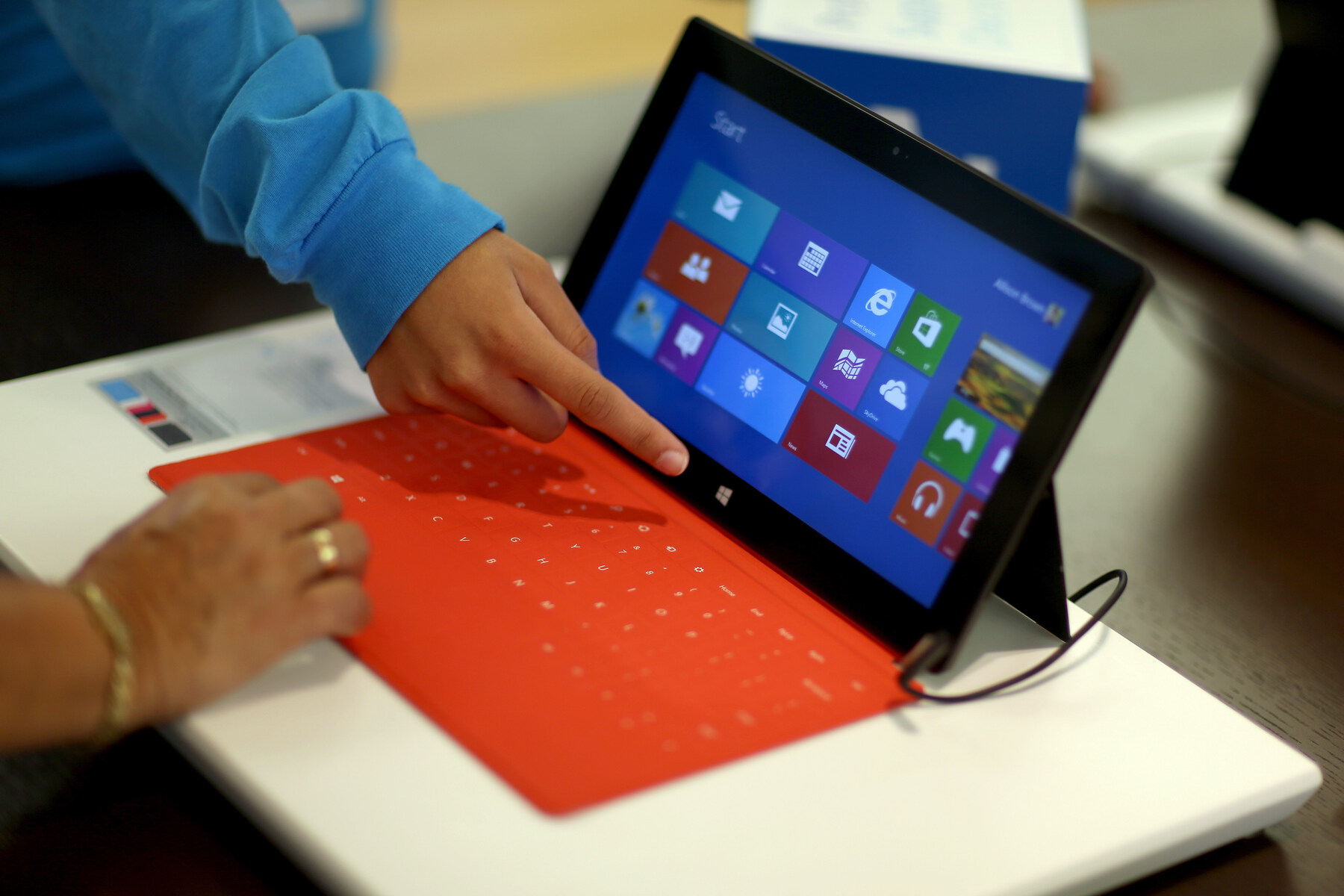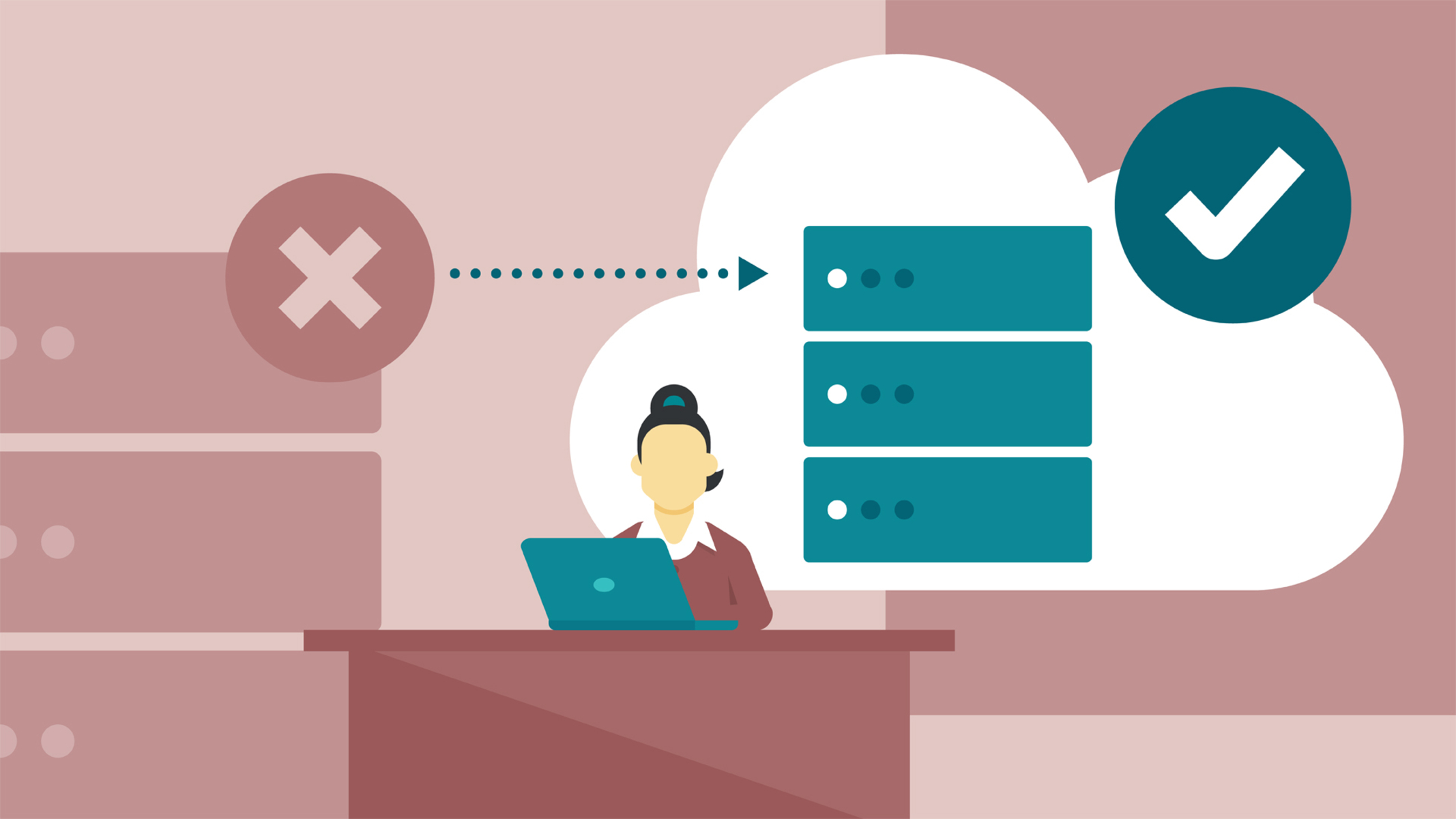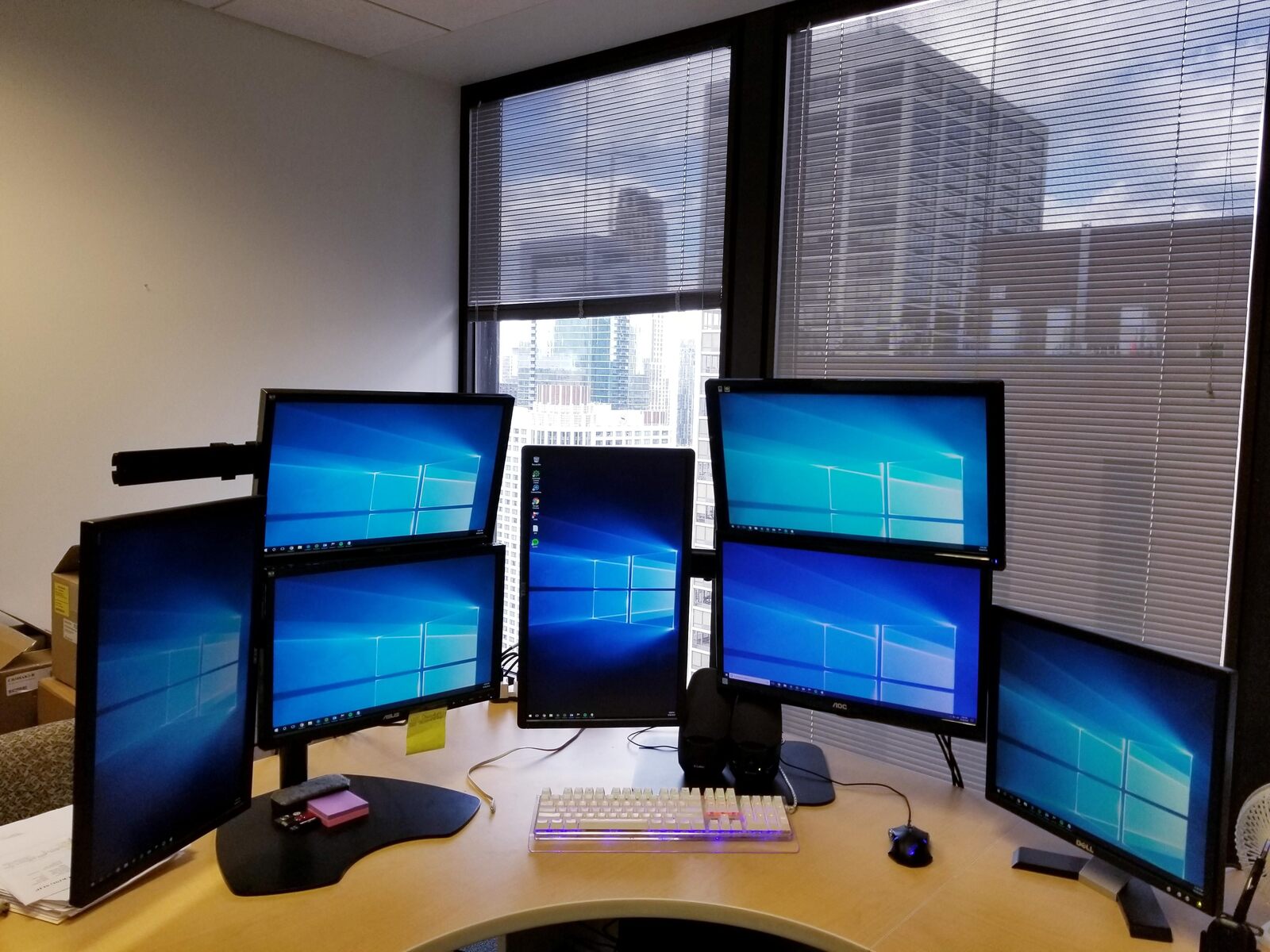Introduction
Welcome to this informative guide on how to find the computer workstation name. The computer workstation name, also known as the computer name or hostname, is an identifier for your computer on a network. Knowing the workstation name is essential for various reasons, including troubleshooting network issues, managing devices, and ensuring secure connections.
Whether you are an IT professional, a system administrator, or simply a curious user, this guide will walk you through several methods to easily find your computer workstation name. From using the Control Panel and Command Prompt to utilizing PowerShell and third-party software, we’ll cover all the bases.
So, whether you’re connecting to a printer, setting up remote desktop access, or troubleshooting network problems, knowing how to find your computer workstation name is an important skill. Let’s dive in and explore the different methods you can use to acquire this information.
Before we begin, it’s important to note that the methods discussed in this guide are primarily applicable to Windows operating systems. If you are using a different operating system, such as macOS or Linux, the steps may vary. However, the concepts and principles shared here can still be useful as a starting point.
Why Finding Computer Workstation Names is Important
Finding your computer workstation name can provide valuable information and serve various purposes. Let’s explore why knowing your workstation name is important:
1. Network Troubleshooting: When experiencing connectivity issues or network problems, identifying your computer workstation name is crucial. It allows IT professionals or system administrators to quickly locate and diagnose the specific machine causing the issue.
2. Device Management: In an organization or network with multiple devices, each computer workstation name serves as a unique identifier. This makes it easier to manage and monitor devices, assign specific permissions, and track user activities.
3. Network Security: Knowing the workstation name is essential for maintaining network security. By being aware of the names of all connected devices, system administrators can identify unauthorized or rogue devices attempting to access the network.
4. Remote Access: When setting up remote access or using remote desktop services, knowing your workstation name is crucial. It enables you to establish a secure connection to your computer from a remote location, allowing you to access files and applications securely.
5. Printer and File Sharing: When sharing printers or files on a network, knowing your workstation name is necessary. It enables you to connect to the correct printer or access shared files from other devices with ease.
6. System Configuration and Support: IT professionals frequently rely on workstation names to manage system configurations and provide technical support. By knowing the unique identifier for each device, IT teams can quickly locate and address any issues or make necessary changes.
By understanding the importance of finding your computer workstation name, you can fully utilize the capabilities of your network and ensure efficient troubleshooting and management. With various methods available, let’s dive into the different ways you can find your computer workstation name.
Method 1: Using the Control Panel
The Control Panel is a built-in Windows utility that provides access to various system settings and configurations. It also allows you to easily find your computer workstation name. Here’s how to do it:
Step 1: Open the Control Panel. To do this, click on the “Start” menu, search for “Control Panel,” and select it from the search results.
Step 2: In the Control Panel window, navigate to the “System and Security” category. Click on it to proceed.
Step 3: In the “System and Security” category, locate and click on the “System” option. This will open the System window, displaying information about your computer.
Step 4: In the System window, you will find the computer workstation name under the “Computer name, domain, and workgroup settings” section. The workstation name will be listed next to the “Computer name” label.
Step 5: Take note of your computer workstation name or write it down for future reference or troubleshooting purposes.
Using the Control Panel is a straightforward method to find the computer workstation name. However, if you prefer a quicker approach or need to access this information frequently, consider using one of the alternative methods discussed next.
Method 2: Using Command Prompt
Command Prompt is a powerful command-line tool in Windows that allows you to execute various commands and access system information. By using Command Prompt, you can easily find your computer workstation name. Here’s how:
Step 1: Open Command Prompt. To do this, click on the “Start” menu, search for “Command Prompt,” and select it from the search results. Alternatively, you can press the Windows key + R, type “cmd” in the Run dialog, and press Enter.
Step 2: In the Command Prompt window, type the following command:
hostname
Step 3: Press Enter to execute the command.
Step 4: The output displayed on the next line will be your computer workstation name.
Note: If you have configured your computer with a custom hostname, the command prompt output will show that custom name. If you haven’t changed your hostname, the default value assigned by the system will be displayed.
Step 5: Make a note of your computer workstation name or write it down for future reference or troubleshooting purposes.
Using Command Prompt is a quick and efficient method to find your computer workstation name, especially if you are comfortable with utilizing the command line interface. However, if you prefer a more visual and user-friendly approach, the next method using PowerShell may be more suitable for you.
Method 3: Using PowerShell
PowerShell is a command-line shell and scripting language designed specifically for system administration and automation tasks in Windows. With PowerShell, you can easily find your computer workstation name using a simple command. Here’s how:
Step 1: Open PowerShell. To do this, click on the “Start” menu, search for “PowerShell,” and select it from the search results. Alternatively, you can press the Windows key + X and choose “Windows PowerShell” or “Windows PowerShell (Admin)” from the menu.
Step 2: In the PowerShell window, type the following command:
Get-WmiObject win32_computersystem | Select-Object -ExpandProperty Name
Step 3: Press Enter to execute the command.
Step 4: The output displayed on the next line will be your computer workstation name.
Note: The PowerShell command used above retrieves the computer name using Windows Management Instrumentation (WMI) and outputs only the value of the “Name” property.
Step 5: Make a note of your computer workstation name or write it down for future reference or troubleshooting purposes.
The PowerShell method provides a flexible and efficient way to find your computer workstation name. It also allows you to leverage the power of PowerShell for other administrative tasks. However, if you prefer a more graphical approach, the next method using System Properties may be more suitable for you.
Method 4: Using System Properties
Another way to find your computer workstation name is by using the System Properties window. This method provides a user-friendly and visual approach to access your computer’s information. Here’s how to do it:
Step 1: Right-click on the “Start” button and select “System” from the context menu. Alternatively, you can press the Windows key + Pause/Break on your keyboard.
Step 2: The System window will open, displaying basic information about your computer. Look for the “Computer name, domain, and workgroup settings” section.
Step 3: Under this section, you will find the computer workstation name listed next to the “Computer name” label.
Step 4: Take note of your computer workstation name or write it down for future reference or troubleshooting purposes.
The System Properties method offers a straightforward and accessible way to find your computer workstation name. It is particularly useful for those who prefer a more visual and intuitive approach over command-line tools. However, if you are looking for an alternative method or prefer a more specialized software solution, continue reading to learn about using a third-party software.
Method 5: Using a Third-Party Software
If you prefer a more advanced or specialized solution for finding your computer workstation name, you can utilize third-party software specifically designed for network management and system information. These tools offer additional features and functionalities beyond simply retrieving the workstation name. Here’s how to find your workstation name using a third-party software:
Step 1: Research and select a reliable third-party software that suits your needs. There are numerous options available, such as network management tools like SolarWinds Network Performance Monitor, system information utilities like Speccy, or even comprehensive software suites like Microsoft System Center Configuration Manager (SCCM).
Step 2: Follow the installation instructions provided by the software vendor to install the chosen third-party software on your computer.
Step 3: Once installed, open the third-party software and navigate to the section or feature that displays system information or computer details.
Step 4: In the system information section, you should be able to locate your computer workstation name. The exact location and label may vary depending on the software you are using.
Step 5: Make a note of your computer workstation name or use any additional features provided by the third-party software for further analysis or management of your networked devices.
Using a third-party software for finding your computer workstation name offers a comprehensive and feature-rich approach. These tools often provide advanced network management capabilities, detailed system information, and additional functionalities that can further enhance your network administration tasks.
However, keep in mind that third-party software may require a purchase or have specific system requirements. Additionally, ensure that you choose a reputable software provider to ensure the security and reliability of the tool you use.
Conclusion
Knowing your computer workstation name is essential for various reasons, including troubleshooting network issues, managing devices, and ensuring secure connections. In this guide, we explored different methods to easily find your computer workstation name.
We began by using the Control Panel, a built-in Windows utility that provides access to various system settings and configurations. We then moved on to using Command Prompt, a powerful command-line tool, followed by leveraging PowerShell, a command-line shell and scripting language specifically designed for system administration tasks.
Next, we discussed how to find the computer workstation name using the System Properties window, which offers a user-friendly and visual approach. Finally, we explored the option of using third-party software for more advanced features and functionalities.
By utilizing these different methods, you can easily retrieve your computer workstation name based on your preferences and level of technical expertise. Whether you prefer a more traditional approach or are looking for advanced network management tools, there is a method for everyone.
Remember that finding your computer workstation name not only helps with network troubleshooting and device management but also supports remote access, printer and file sharing, network security, and system configuration. Having this information readily available can streamline your daily tasks and enhance your overall computing experience.
Choose a method that suits your needs and technical capabilities, and make a note of your computer workstation name for future reference or troubleshooting purposes. With this knowledge, you can confidently navigate your network, manage devices, and address any issues that may arise.
Thank you for following this guide, and we hope it has been helpful in your quest to find your computer workstation name.

























